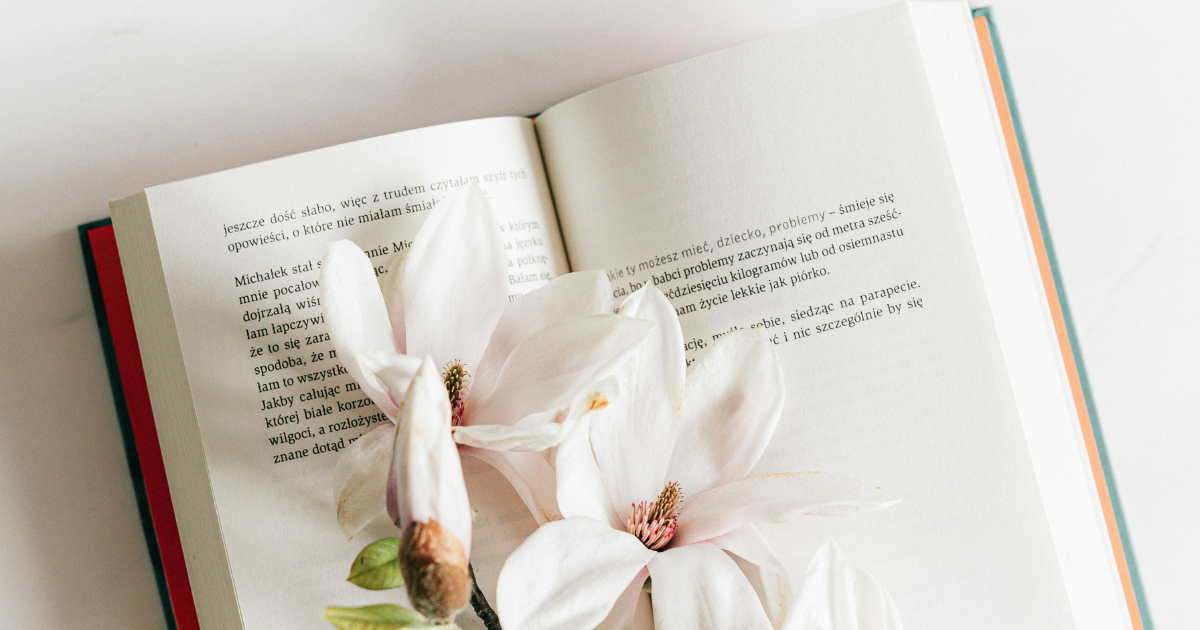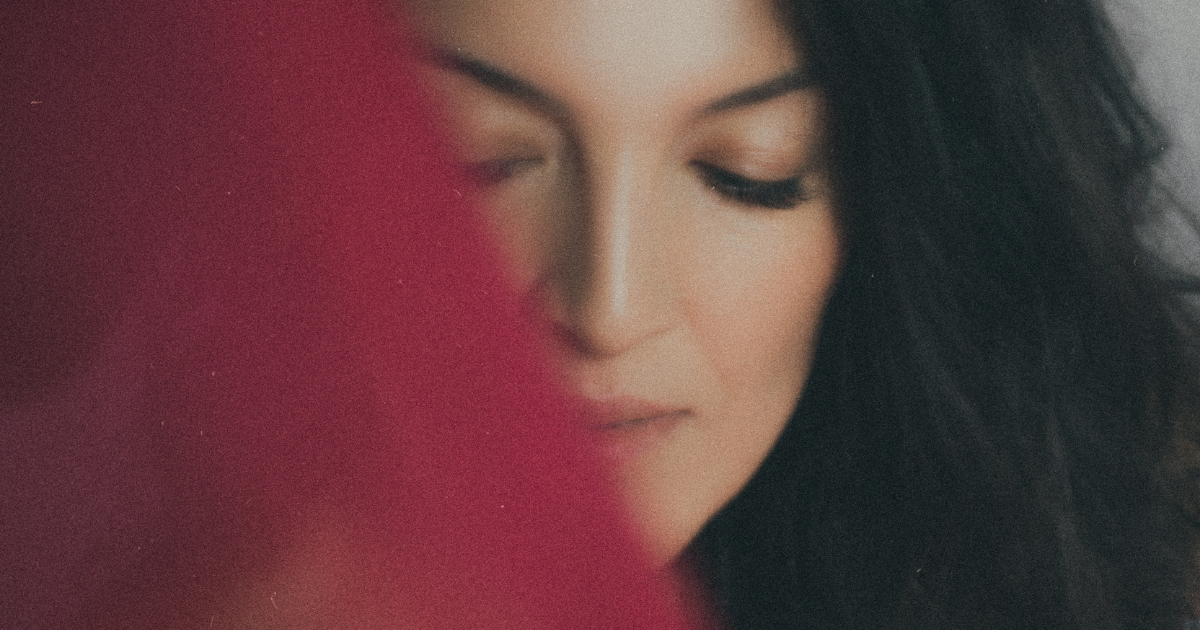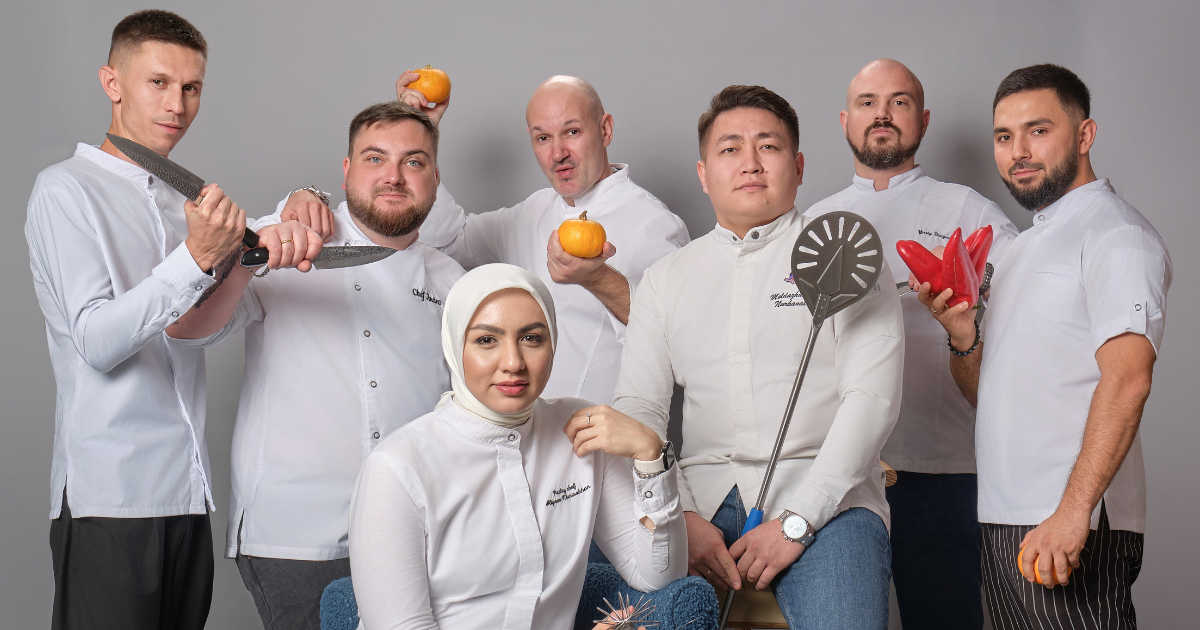Turkic art in the hands of women
The “Women Artists of the Turkic World” exhibition
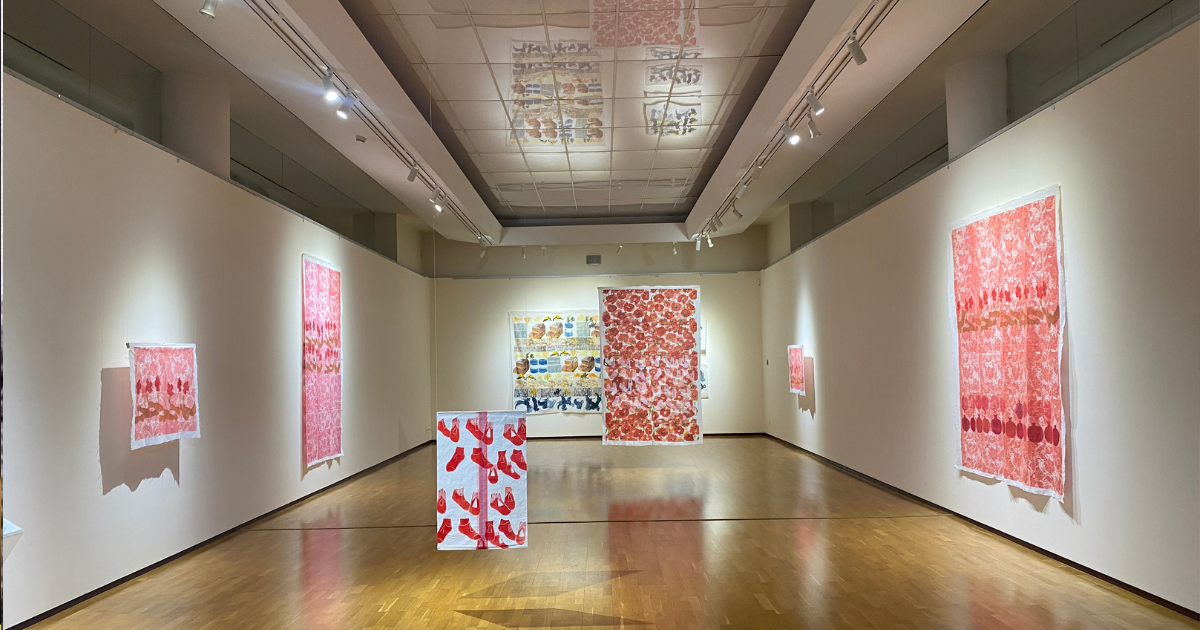
“Women artists of the Turkic world” – a phrase that holds profound meaning. As vast and multifaceted as the civilization it represents, the culture of our ancestors, rooted in nearly every region of the globe, is incredibly rich, diverse, and at times, ambiguous. Through centuries of war, massive natural disasters, and forced assimilation by totalitarian regimes, the native communities of the Turkic peoples have undergone significant transformations.
Today, one of the greatest challenges for intellectuals and art historians of the Turkic world is to identify and rediscover the lost roots of artistic heritage and trace its legacy.

Organized by TÜRKSOY – the International Organization of Turkic Culture – in collaboration with the Academy of Arts of Uzbekistan, this mobile exhibition is the second of its kind. Participating artists work across diverse genres, each with their own themes and distinctive styles.

The first edition, held in 2024 in Bishkek, brought together creative women from across the Turkic world, taking an important step toward decoding a shared cultural identity. Historically, artistic expression among Turkic women was rooted in traditional crafts – felting, carpet weaving, embroidery, block printing – but today, their creativity has reached entirely new artistic heights.
The exhibition featured works not only carrying the genetic memory of the Turkic peoples but also conveying universal human values through various styles. Participating artists hailed from Azerbaijan, Kazakhstan, Kyrgyzstan, Turkmenistan, Turkey, and Uzbekistan.
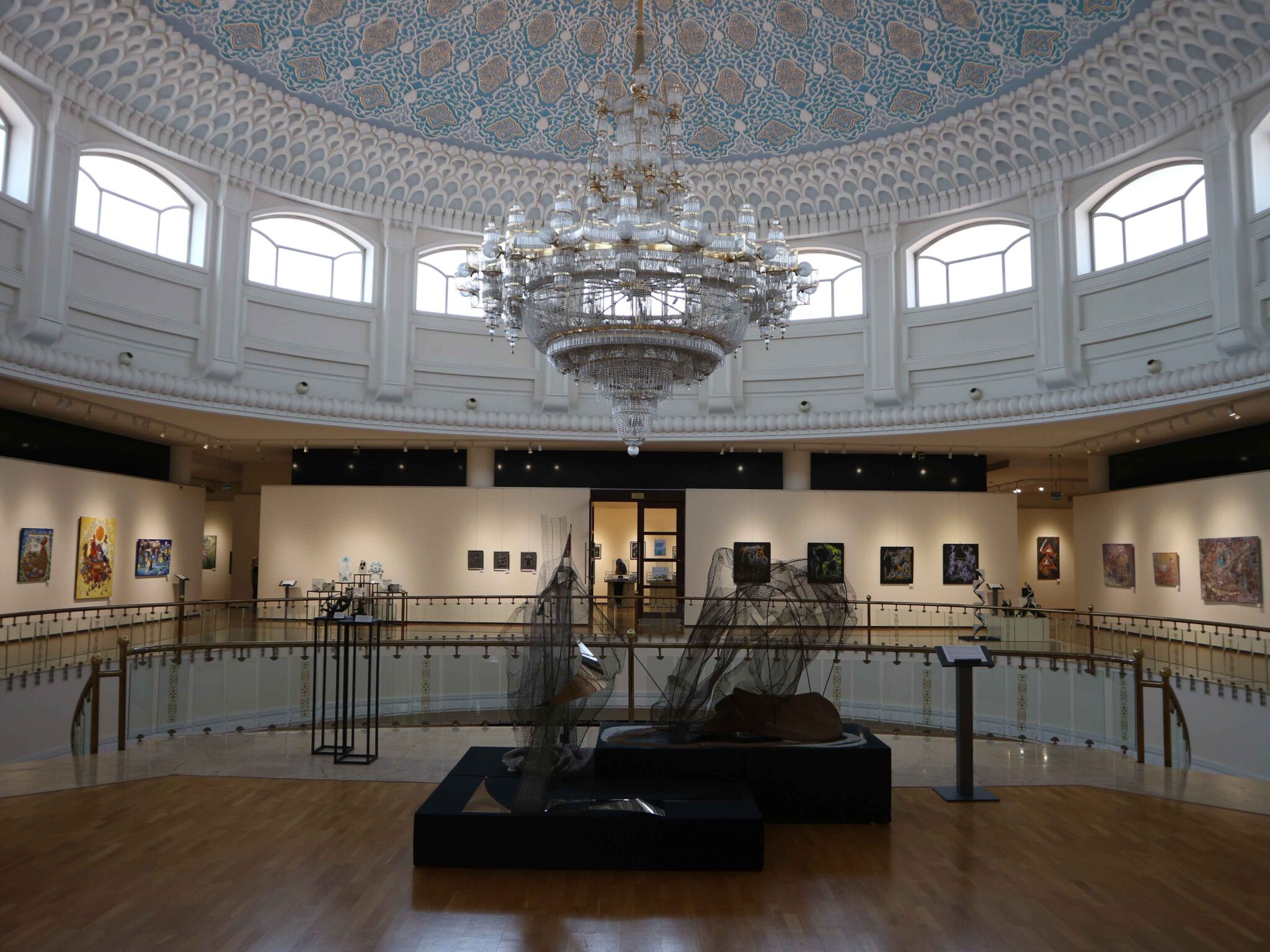
ELLE Oʻzbekiston spoke with Renknar Burcu Günay, an artist from Turkey, whose works stood out for their unique presentation and layered meaning.
ELLE: What does participating in the “Women Artists of the Turkic World” exhibition mean to you?
I was proud and excited to be invited to this exhibition, which was held as part of the Tashkent Festival of Fine Arts, where I had the honor of sharing my creative process with the audience. This large-scale exhibition, where I represented Turkey alongside a fellow artist, allowed me to meet artists from other Turkic countries. And even though we live in different nations, I believe that through this project, we were once again able to highlight our shared cultural heritage and reveal the areas where our cultures intersect.
ELLE: Could you tell us about the works you exhibited in Tashkent?
First, I would like to talk about the exhibition space at the Tashkent Art Gallery. What we saw was a unique art center, thoughtfully designed with ample space, combining both classical and contemporary elements. I was truly impressed by the meticulous and forward-thinking approach of the curator and the entire team responsible for the installation of the artworks.
Each artist was given their own dedicated space. The prints displayed on the walls or hanging from the ceiling were dedicated to plants, the universe, mythological events, and cultural codes. My works at the exhibition can be divided into three sections. The first featured a series symbolizing women holding flowers, with peonies and carnations being dominant motifs. In this section, I repeatedly used the image of the pomegranate.
In Uzbekistan, as in many other cultures, the pomegranate is considered a symbol of fertility and abundance. The prints in the second or middle section of the exhibition depict the earthquake that occurred two years ago, which severely affected around ten provinces in Turkey. The poppy, commonly found in Adıyaman, one of the hardest-hit provinces, and historically referred to as the “cemetery flower” since the Roman era, covers the surface, evoking the image of a field.
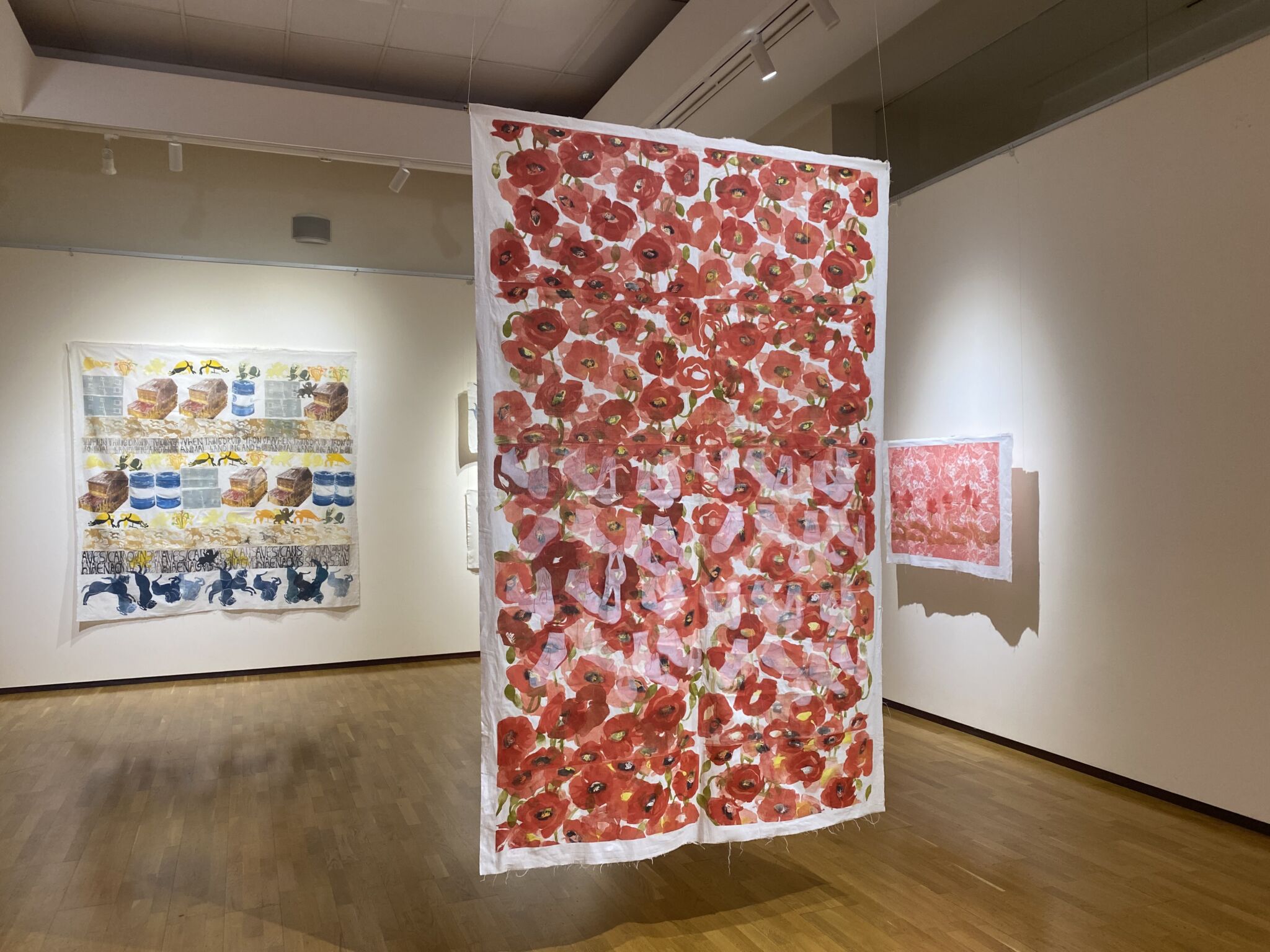
Among the poppies are multiple depictions of red shoes – an element inspired by mosaics from the Adıyaman region. These images are partially printed on white fabric.
I wanted to make visible the unity of all the lives lost during the earthquake, including those whose bodies were never found. The images of red shoes on burlap can be interpreted as a symbol of those people – those who lost their homes, perhaps even their lives, and whose memories now fit, maybe, into a single bag.
The prints placed in the final and rear section of the installation continue the theme of critiquing recent social issues. Among them is an image of a hotel where 78 people died due to negligence, and a barrel symbolizing a tragic death. However, in the very last part, I chose to depict blue horses as a symbol of life, its continuity, and the hope that moves forward as we run toward the future.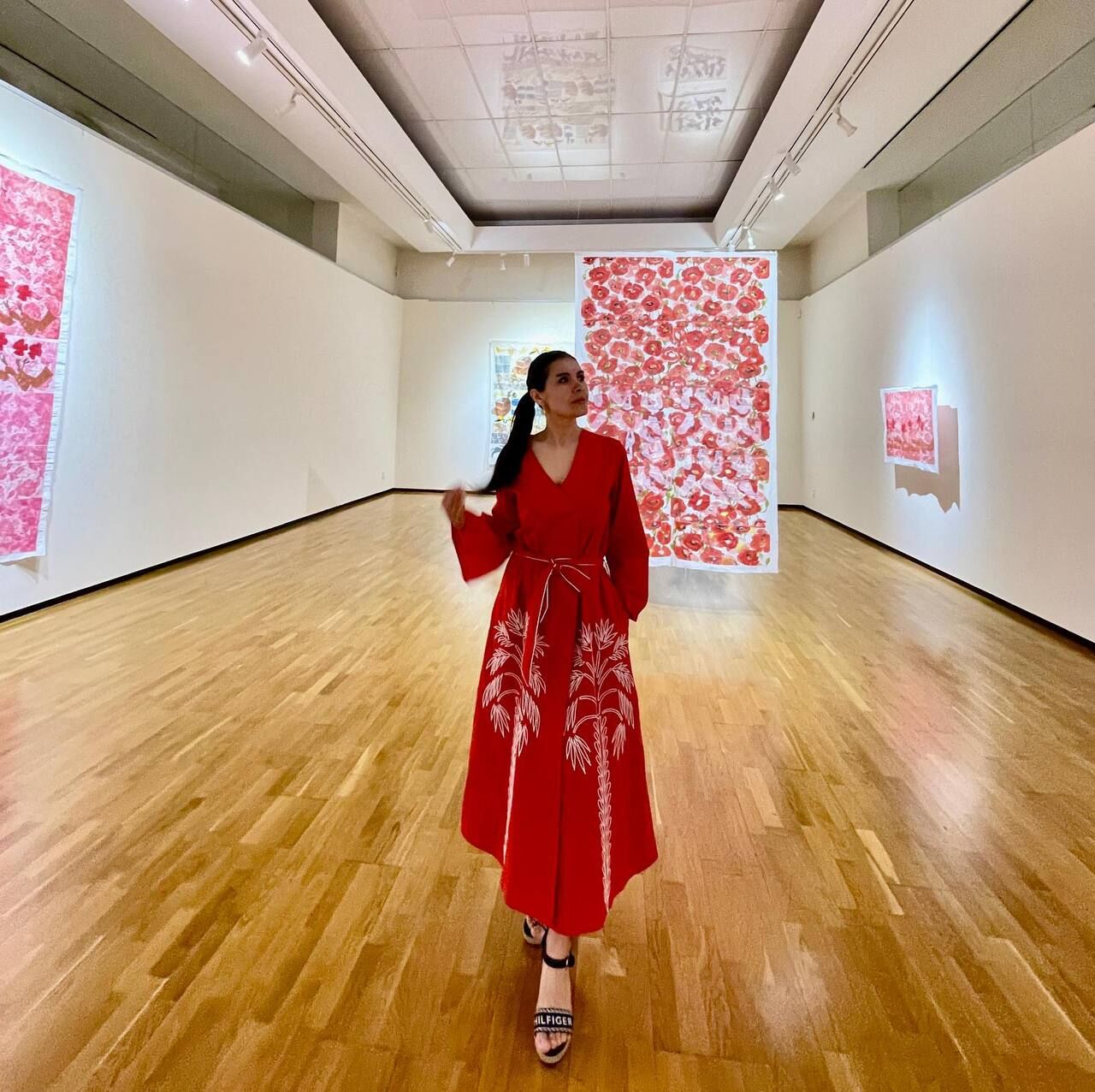
This expansive exhibition featured works by 21 artists, including myself. Many of the pieces were striking and thought-provoking, so it’s difficult to choose just one. In each national section, there was something that deeply moved me – a portrait, a landscape, or a moment from daily life.
At the same time, I was deeply impressed by the intensifying painterly approach in the red and green palette of works by Halime Türkyılmaz, with whom I represented our country; the felt and fabric installation interacting with the space in the Kyrgyzstan section curated by Cholpon Tentieva; and the portrayals of figures in traditional Kazakh costumes by Nargiz Alib.
Photo by Dima Akhunbabayev, Renknar Burcu Günay.
